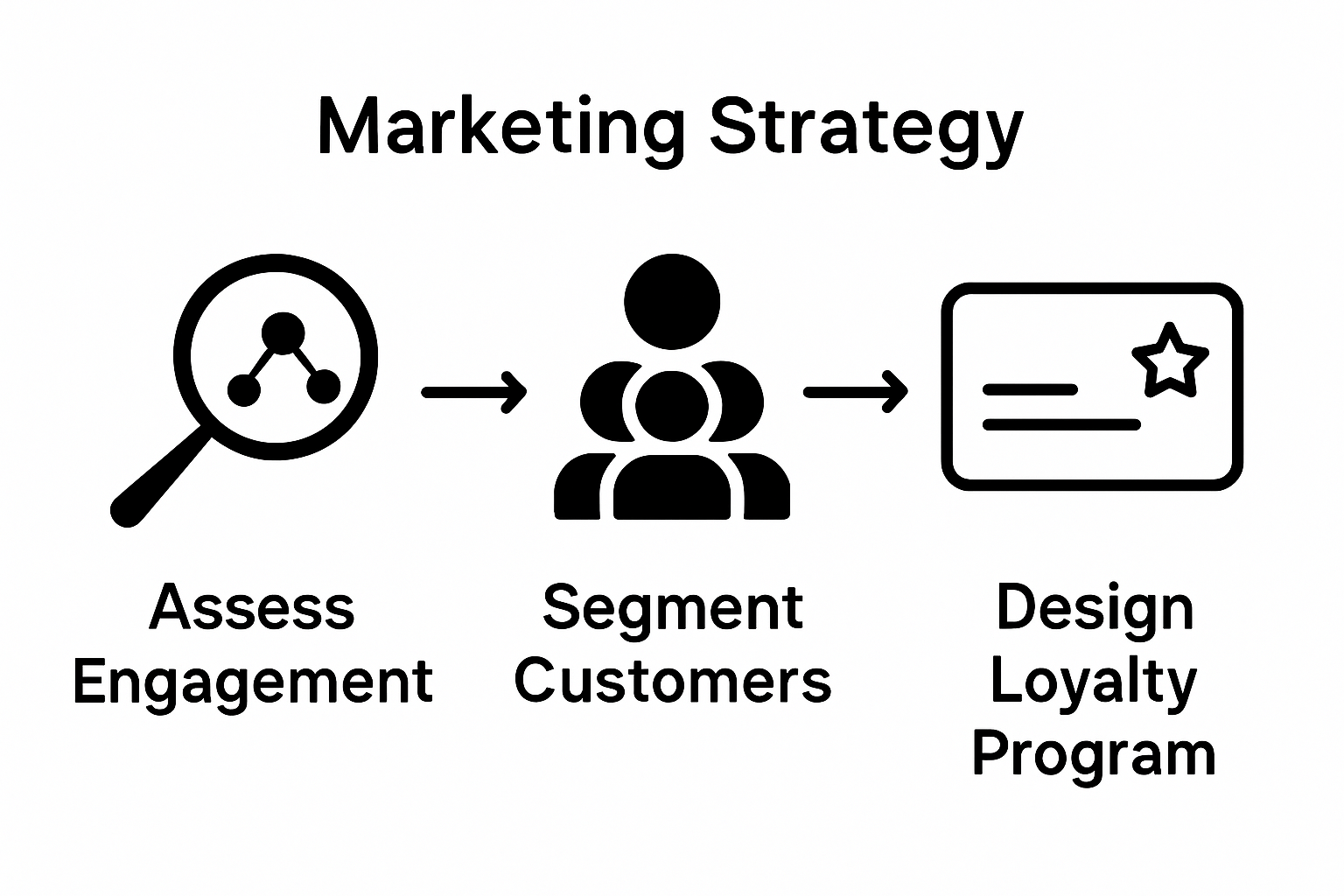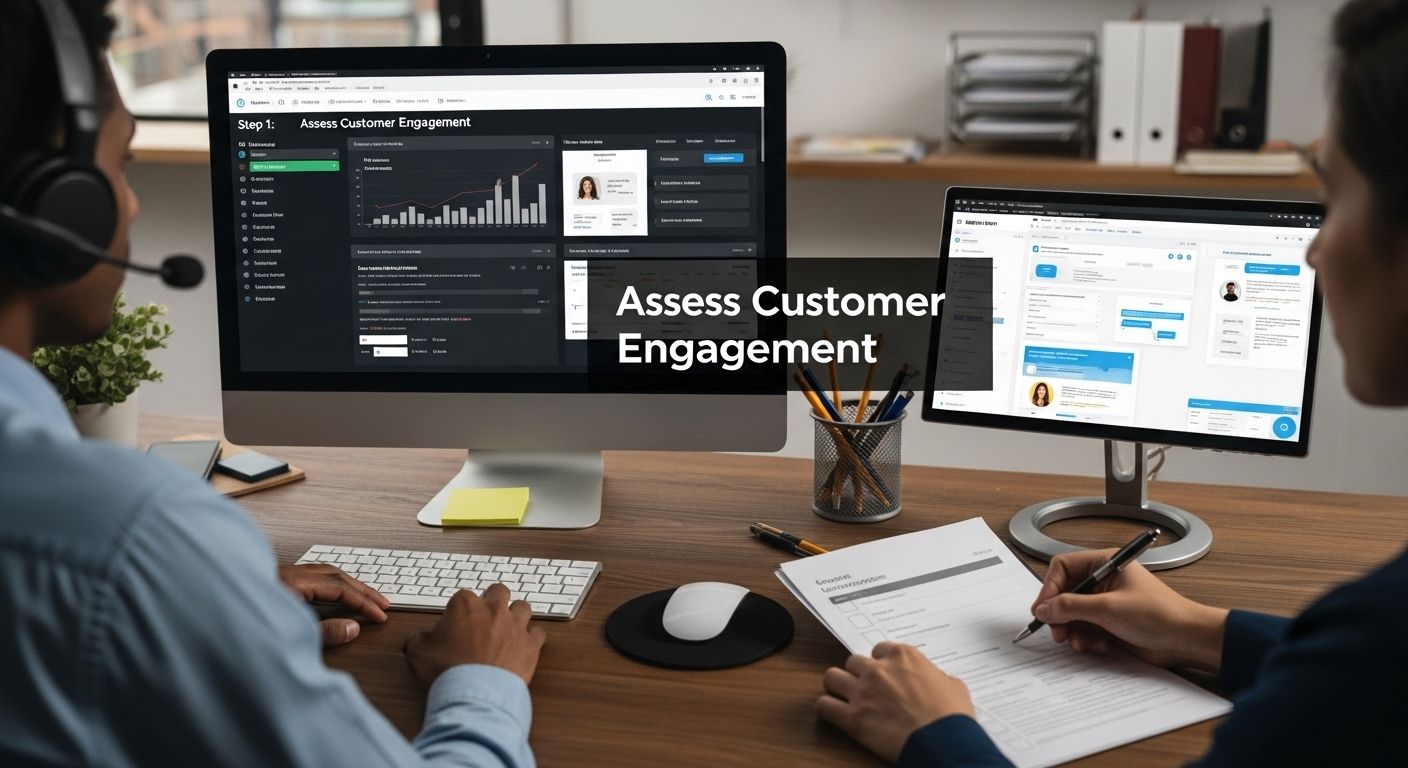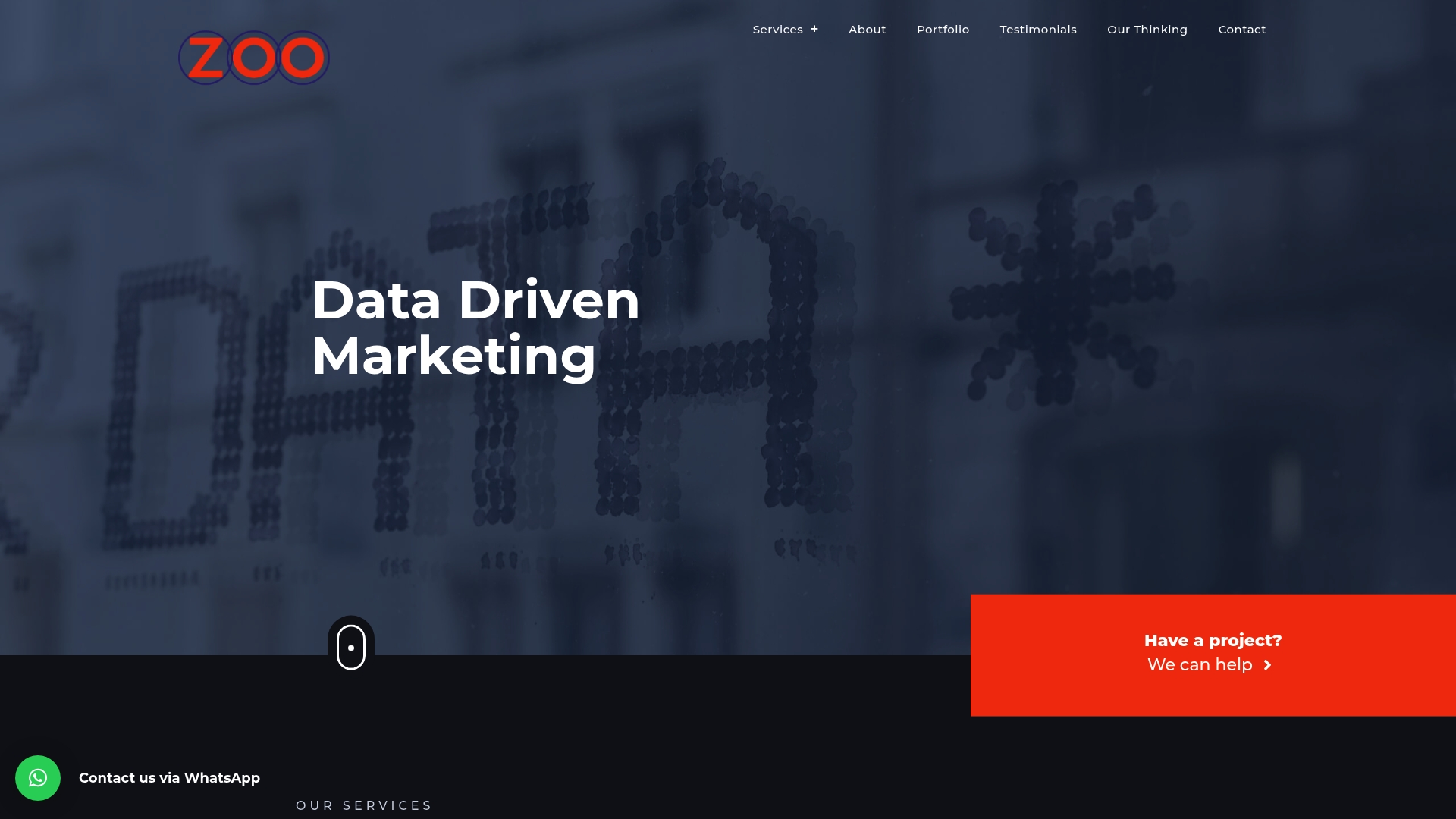Every business wants loyal customers and for good reason. Even a modest loyalty program can drive customer lifetime value up by 29 percent. Surprising, right. Most people think that blasting out rewards points is enough to keep people coming back. The real secret sits in how well you actually understand and respond to your customers, not just the size of your discount.
Table of Contents
- Step 1: Assess Your Current Customer Engagement Strategies
- Step 2: Identify Key Customer Segments And Their Needs
- Step 3: Develop A Loyalty Program That Resonates
- Step 4: Implement Customer Feedback Mechanisms
- Step 5: Measure The Impact Of Your Loyalty Initiatives
Quick Summary
| Key Point | Explanation |
|---|---|
| 1. Assess current engagement strategies | Evaluate existing customer touchpoints to identify strengths and weaknesses in engagement methods. |
| 2. Segment customers effectively | Use detailed research to create customer personas that inform personalized engagement and loyalty strategies. |
| 3. Design a meaningful loyalty program | Align rewards with customer preferences and motivations to foster genuine loyalty beyond discounts. |
| 4. Implement feedback mechanisms | Establish multiple channels for customers to share their feedback, ensuring ease and constructive dialogue. |
| 5. Measure loyalty initiatives’ impact | Create a comprehensive measurement framework to track and analyse the effectiveness of loyalty programs and their outcomes. |

Step 1: Assess Your Current Customer Engagement Strategies
Successful creating customer loyalty begins with a comprehensive assessment of your existing engagement strategies. This critical first step helps you understand precisely where your current approach stands and identify potential opportunities for improvement. The goal is to develop a clear snapshot of your customer interactions and pinpoint areas that require strategic refinement.
Start by conducting a thorough audit of your customer touchpoints. This means carefully examining every interaction channel where customers engage with your business. Review your website analytics, social media interactions, email communication records, customer service logs, and sales data. Look for patterns in customer behavior, response rates, and satisfaction levels. Pay special attention to metrics like customer retention rate, average interaction frequency, and customer feedback scores.
To systematically evaluate your engagement strategies, gather quantitative and qualitative data. Use customer surveys, direct feedback mechanisms, and advanced tracking tools to collect comprehensive insights. Learn more about strategic business analysis to enhance your assessment process. Mapping out the entire customer journey will reveal critical touchpoints and potential friction areas that might be hindering customer loyalty.
Consider implementing a structured evaluation framework that includes:
- Customer interaction frequency
- Response time across communication channels
- Quality and depth of customer support
- Personalization level of customer experiences
- Customer satisfaction and net promoter scores
As you analyze your current strategies, remember that creating customer loyalty is an ongoing process. The insights you gather now will form the foundation for developing more targeted, effective engagement approaches. Your assessment should not only highlight weaknesses but also recognize existing strengths that can be further leveraged to build stronger customer relationships.

Verify the success of your assessment by ensuring you have a comprehensive document that outlines current engagement performance, identified gaps, and potential improvement areas. This living document will serve as a roadmap for your customer loyalty enhancement journey, guiding your subsequent strategic decisions and implementation steps.
Step 2: Identify Key Customer Segments and Their Needs
Identifying key customer segments is a crucial step in creating customer loyalty. This process transforms generic customer interactions into targeted, meaningful experiences that resonate deeply with specific groups. By understanding the unique characteristics, preferences, and pain points of different customer segments, businesses can develop more personalized and effective engagement strategies.
Segment your customer base by conducting comprehensive research that goes beyond basic demographic information. Start by analyzing your existing customer data, looking for patterns in purchasing behavior, communication preferences, and interaction history. Explore advanced market research techniques to refine your segmentation approach. Consider utilizing both quantitative data from sales records and qualitative insights from customer feedback surveys, social media interactions, and direct customer conversations.
Develop detailed customer personas that capture the essence of each segment. These personas should include more than just age and income level they should encompass motivations, challenges, goals, and communication preferences. According to research from Utah State University, effective market segmentation requires understanding both demographic and psychographic characteristics.
Your customer segmentation strategy should include key components:
- Behavioral patterns and purchase history
- Communication channel preferences
- Primary motivations and pain points
- Potential lifetime customer value
- Unique needs and expectations
To verify the effectiveness of your segmentation, ensure you have created comprehensive profiles that reveal actionable insights. Each segment should have a clear set of characteristics that distinguish it from others, with specific strategies for engagement and value delivery. The goal is not just to categorize customers but to develop a nuanced understanding that allows for more personalized and meaningful interactions.
Remember that customer segments are not static. Regularly review and update your segmentation strategy to account for changing market conditions, emerging customer needs, and shifts in your business landscape. This dynamic approach ensures that your customer loyalty efforts remain relevant and impactful, adapting to the evolving expectations of your diverse customer base.
Step 3: Develop a Loyalty Program That Resonates
Developing a loyalty program that genuinely connects with your customers is more than just offering discounts. It requires creating a strategic approach that makes customers feel truly valued and understood. The most successful loyalty programs transform transactional relationships into meaningful, long-term connections that go beyond simple monetary rewards.
Start by aligning your loyalty program directly with the customer segments you identified in the previous step. This means crafting rewards and experiences that speak directly to each group’s unique motivations and preferences. Learn about innovative customer engagement strategies to enhance your approach. According to research from Washington University’s Olin Business School, even simple loyalty programs can increase customer lifetime value by up to 29% when designed thoughtfully.
Consider developing a multi-tiered loyalty structure that provides increasing value as customers engage more deeply with your brand. This approach creates a sense of progression and achievement. Think beyond traditional points systems by incorporating experiential rewards that make customers feel special. This might include exclusive access to events, personalized services, early product releases, or unique consultation opportunities that demonstrate you understand their specific needs.
Your loyalty program should include key elements that drive engagement:
- Transparent and easily understandable reward mechanisms
- Rewards that feel meaningful and achievable
- Multiple ways to earn and redeem rewards
- Personalized communication about program benefits
- Clear pathways for reward progression
Implement robust tracking and communication systems that allow customers to easily monitor their progress and understand the value they are receiving. Use digital platforms that provide real-time updates and seamless redemption processes. The easier you make it for customers to engage with and benefit from your loyalty program, the more likely they are to remain committed to your brand.
Verify the success of your loyalty program by establishing clear metrics. Monitor key performance indicators such as repeat purchase rates, customer retention, average transaction value, and program participation levels. Regularly solicit feedback from participants to refine and evolve your approach, ensuring the program continues to meet changing customer expectations and delivers genuine value.
Step 4: Implement Customer Feedback Mechanisms
Implementing robust customer feedback mechanisms is crucial for creating customer loyalty. This step transforms passive customer interactions into active, meaningful dialogues that help your business continuously improve and demonstrate genuine commitment to customer satisfaction. The goal is to create multiple, accessible channels that encourage honest and constructive feedback from your diverse customer segments.
Explore advanced digital transformation strategies to enhance your feedback collection approach. According to research from Section 508 guidelines, effective feedback mechanisms should provide immediate confirmation, allow anonymity, and make submission easy for customers.
Design a comprehensive feedback strategy that incorporates both digital and traditional communication channels. This might include online surveys, direct email follow-ups, social media interaction points, customer service hotlines, and in-person feedback opportunities. The key is to make providing feedback feel effortless and genuinely appreciated. Develop user-friendly interfaces for digital feedback forms, ensuring they are mobile-responsive and can be completed quickly.
Your feedback mechanism strategy should include critical components:
- Multiple feedback collection channels
- Clear, concise feedback questions
- Immediate acknowledgment of received feedback
- Transparent communication about how feedback will be used
- User-friendly submission processes
Establish a systematic process for reviewing and acting on collected feedback. This means creating internal workflows that ensure every piece of customer input is read, categorized, and considered. Set up regular review meetings where team members from different departments discuss emerging themes and potential improvements. Demonstrating that you not only collect but actually implement customer suggestions is crucial for building trust and loyalty.
Verify the effectiveness of your feedback mechanisms by tracking key metrics such as feedback submission rates, response diversity, implementation of suggested changes, and subsequent customer satisfaction improvements. Regularly communicate back to your customers about the changes made based on their input, creating a transparent loop that shows you value their contributions and are committed to continuous improvement.
Step 5: Measure the Impact of Your Loyalty Initiatives
Measuring the impact of your customer loyalty initiatives is critical for understanding their effectiveness and guiding future strategic decisions. This step transforms your loyalty efforts from theoretical concepts into measurable, actionable insights that directly influence your business growth. The key is to develop a comprehensive measurement approach that goes beyond surface-level metrics and provides deep understanding of your customer relationships.
Discover advanced marketing analytics techniques to enhance your measurement strategy. According to research published in the MIT Sloan Management Review, customer loyalty metrics serve as powerful indicators of potential business growth and strategic success.
Develop a holistic measurement framework that captures multiple dimensions of customer loyalty. This involves tracking both quantitative and qualitative indicators that provide a 360-degree view of your loyalty initiatives. Quantitative metrics might include customer retention rates, repeat purchase frequency, average transaction value, and customer lifetime value. Qualitative measurements could involve sentiment analysis, net promoter scores, and in-depth customer feedback assessment.
Your loyalty impact measurement strategy should encompass these critical elements:
- Comprehensive data collection across multiple channels
- Regular performance benchmarking
- Segmented analysis by customer groups
- Continuous tracking of key performance indicators
- Adaptive reporting mechanisms
Implement robust tracking tools and analytics platforms that can integrate data from various sources, providing a unified view of customer loyalty performance. This might involve using customer relationship management systems, advanced analytics software, and custom dashboards that offer real-time insights. Pay special attention to correlations between your loyalty initiatives and key business outcomes, such as revenue growth, customer acquisition costs, and market share expansion.
Verify the effectiveness of your measurement approach by establishing a consistent review process. Schedule quarterly deep-dive analysis sessions where you critically examine the collected data, identify trends, and develop actionable strategies for improvement. The ultimate goal is to create a dynamic, responsive system that allows your loyalty initiatives to evolve continuously based on concrete evidence and customer insights.
The table below compiles common loyalty programme measurement criteria, helping you to benchmark and systematically evaluate your strategy’s effectiveness across different touchpoints and success indicators.
| Metric | What It Measures | Why It Matters |
|---|---|---|
| Customer Retention Rate | % of customers who remain over time | Shows ongoing loyalty and programme impact |
| Repeat Purchase Frequency | How often customers buy again | Indicates engagement and programme success |
| Average Transaction Value | Spend per transaction | Reveals uplift in customer value and sales |
| Programme Participation Levels | Proportion of customers enrolled and active | Highlights appeal and usability of the loyalty programme |
| Net Promoter Score (NPS) | Likelihood customers recommend business | Reflects overall satisfaction and advocacy |
| Customer Feedback Implemented | Number of suggestions actioned | Demonstrates responsiveness and builds further trust |
Unleash Real Customer Loyalty with Data-Driven Strategies
Tired of guessing what makes your customers stay or slip away? If your business struggles to connect multiple touchpoints, track engagement properly or build a loyalty programme that truly resonates, you are not alone. As highlighted in “Master Creating Customer Loyalty: A Step-by-Step Guide”, meaningful loyalty is built on data, segmentation and continuous feedback. But bridging these steps can be hard without expert tools and support.

Let Zoo Digital transform your loyalty approach into measurable growth. With our expertise in tracking implementation, marketing automation, and customer journey analytics, we empower you to identify clear customer segments, streamline touchpoints and engineer rewarding experiences. Ready to see more repeat business and real retention? Visit Zoo Digital today to put world-class solutions behind your loyalty programme, or explore how our data-driven marketing helps South African brands build lifelong customer relationships. Act now to future-proof your customer loyalty with proven strategy and smart technology.
Frequently Asked Questions
What are the key steps in creating customer loyalty?
Creating customer loyalty involves five key steps: assessing current engagement strategies, identifying key customer segments, developing a meaningful loyalty program, implementing feedback mechanisms, and measuring the impact of loyalty initiatives.
Below is a step overview table summarising each key action in the customer loyalty process, with a quick look at the main objectives and outcomes of each stage.
| Step | Key Objective | Main Outcome |
|---|---|---|
| Assess Engagement | Understand current touchpoints and performance | Identify engagement strengths and improvement opportunities |
| Segment Customers | Analyse and profile customer base | Develop tailored personas and engagement strategies |
| Design Loyalty Programme | Align rewards with customer needs | Launch a differentiated, meaningful loyalty offering |
| Gather Feedback | Set up accessible feedback mechanisms | Gain insights and promote customer trust |
| Measure Impact | Track metrics and analyse results | Guide improvements and demonstrate loyalty ROI |
How can I assess my current customer engagement strategies?
Begin by auditing all customer touchpoints, reviewing analytics from your website, social media, and customer service interactions. Analyze metrics such as customer retention rates and satisfaction scores to identify strengths and areas for improvement.
What factors should I consider when identifying customer segments?
Identify customer segments by analyzing purchasing behavior, communication preferences, and feedback. Develop detailed customer personas that encompass motivations, challenges, and expectations beyond just demographics.
How do I measure the impact of my loyalty initiatives?
Implement a comprehensive measurement framework that tracks both quantitative metrics, like retention rates and transaction values, and qualitative metrics, such as customer feedback and sentiment analysis. Regularly review and adapt your strategies based on this data.
Recommended
- Effective Marketing for Service Businesses in 2025 – Zoo Digital
- 7 Simple Steps to Digital Transformation for Small Businesses – Zoo Digital
- The Importance of Branding for Small Businesses – Zoo Digital
- How to Build a Marketing Strategy for Small Businesses in 2025 – Zoo Digital
- How to Grow Podcast Audience: Tips for Listeners and Brands | Prodcast
- Understanding Customer Journey Mapping in Real Estate – Lead Linker

